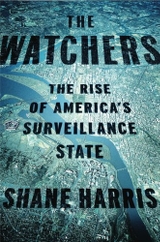Fixing FISA
Just when you thought it was safe to go on vacation…
Congress and the administration have been busy bees the past week, haggling over modifications to the Foreign Intelligence Surveillance Act. The new law effectively legalizes much of what the National Security Agency has been doing since 9/11 under the so-called Terrorist Surveillance Program. Intelligence agencies now can intercept communications from individuals outside the United States–including American citizens–without warrants. The significant element here is that now, the NSA and others don’t have to stop surveillance and obtain a warrant when the target who is outisde the United States communicates with someone inside the United States. That’s the big change. And while it’s important to emphasize that the government cannot target someone inside the country without a warrant–the target has to be overseas–the new law significantly broadens intelligence-gathering powers in a number of important ways.
Perhaps the most significant, and so far least-reported aspect, is that the new law doesn’t narrow these powers to collecting intelligence about terrorism. In fact, the words “terrorist” and “terrorism” never appear in the law at all. The operative term here is “foreign intelligence.” This new law should be read not just in the context of counterterrorism, but as a broader modification of the government’s eavesdropping and surveillance powers.
The story is still developing, and we’ll likely have to wait a while to understand the new law’s effects fully. But here are some quick pointers.
First, NPR’s Talk of the Nation addressed the issue yesterday in a half-hour segment. I joined a panel of guests including Sen. Bob Casey (D-Penn.), who voted for the new surveillance law, and Rep. Anna Eshoo (D-Calif.), who voted against it. Diane Rehm is also devoting her show this morning to the topic.
James Risen also had a piece in yesterday’s New York Times that looks at how the law broadens the intelligence agencies’ powers. This really got under the White House’s skin–recall that Risen was one of two reporters who revealed the NSA’s warrantless surveillance in December 2005–and yesterday the press office issued a rebuttal. Note that the White House doesn’t say Risen’s story is wrong, and that he does point out that the new law doesn’t allow warrantless surveillance of a target inside the United States.
One larger story here is how and why the Democrats acceded to much of what the administration was asking for with regards to “updating” FISA. Part of the explanation is pure math–Nancy Pelosi knew that the Dems didn’t have to votes to defeat the bill. But there is much to learn here about how the Democrats view themselves as a majority party on national security issues.
It’s also important to note that many credible experts are arguing this new law does not significantly enhance the government’s surveillance powers. We will hear a lot of debate on that point in the coming weeks, and it will frame the discussion when this new law comes up for reauthorization in six months.


